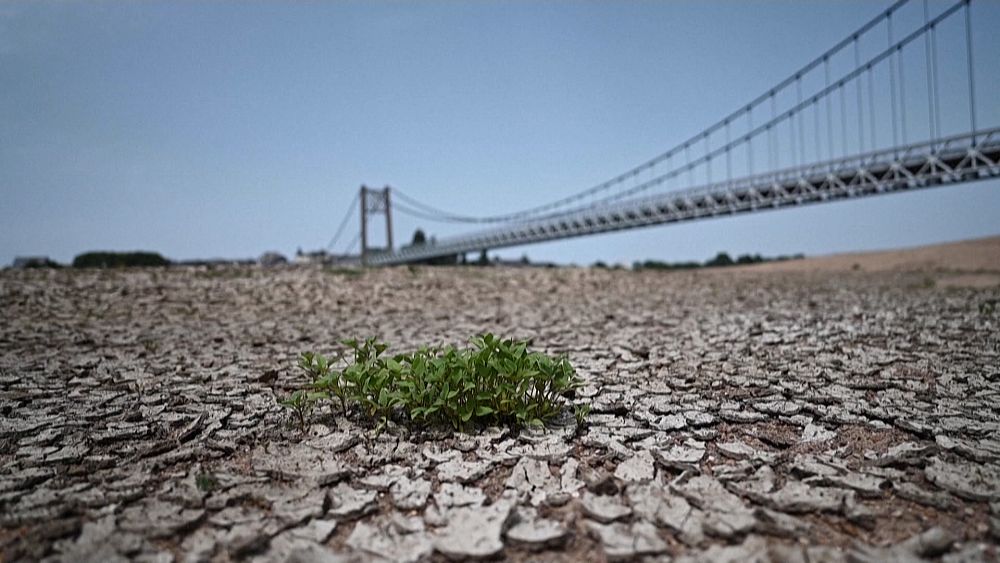2022 has been a banner year for our climate, especially here in Europe, where countries from Ireland to Croatia are experiencing the hottest years on record.
Looking at the latest December 2022 data from the Copernicus Climate Change Service, temperatures in Europe have increased +0.9 degrees Celsius above the 1991-2020 average.
That figure shows a huge difference between the north and south of the continent.
In this graph we see the British Isles and the Scandinavian Peninsula in blue, which have cooler temperatures; Reykjavik in Iceland hit its lowest temperature since 1918.
In the Mediterranean, temperatures were well above last month’s average.
And for many Europeans, this very hot December marks the end of a very warm year.
All areas shaded red on this map are experiencing their hottest year on record in 2022.
From the British Isles to the Iberian Peninsula and the Balkans.
Last year was great, but it won’t continue.
In a few decades these temperatures will be considered normal, as climatologist Valérie Masson-Delmotte explains:
“2022 average summer temperatures will be the standard for 2050, 2060. What you have to understand is that a year like 2022 is extraordinary, but events like these are going to be more frequent, more intense. So imagine what happens is going to be a record at 2050, 2060 compared to an average like the summer of 2022.”
The effect of rising temperatures on health
Last summer’s heat wave had a devastating effect on the natural environment, but what less is known about is the impact on human health.
It is estimated that more than 20,000 deaths occurred in Europe last summer due to extremely high temperatures.
Not only in Spain and France, where cases have previously been recorded, but also in Great Britain… Countries that hit all-time highs last summer:
Parts of England hit over 40 degrees Celsius in July, new record highs which prompted the country’s weather service to issue an unprecedented red alert for extreme heat….
Moreover, it is said that cases of sickness and death may arise even among healthy and fit people.
Experts like Vikki Thompson, a climatologist at the University of Bristol’s Cabot Institute, argue that we need a shift in attitudes about heat:
“Especially in the very north of Europe, England, Denmark, Germany… we still see the fact that the heat is something great, that we can just take it out and enjoy it and have fun. And we have to be a little more aware that you can enjoy the heat, but there are long-term implications.”
Most of the deaths occur among the elderly or very young.
However, data from Europe and North America shows that women are 15% more at risk of heat stroke than men, and scientists still don’t know exactly why:
“Two of the main theories are that women have a higher body temperature, so they need to cool off more, and also that women may sweat less than men and, again, will prevent them from cooling down,” he said. . Thompson.
The cryosphere is melting
From summer heat to the cryosphere: frozen areas of our planet.
They are on the forefront of climate change, and in 2022 the Arctic and Antarctic recorded sea ice extent below the year-round average. (close with illustration)
At the top of Greenland, it has rained instead of snowed for the second year in a row.
And the Swiss Alps lost 6% of their total remaining ice volume, says glaciologist Matthias Huss.
“2022 is a very special year in the Alps region because we have a combination of very little snow in the winter with very high temperatures in the summer, there are several continuous heatwaves. This mix is the worst thing that can happen to a glacier , and this translated into absolutely record-breaking ice losses that we had never seen before.”
This is all happening, of course, because the concentration of greenhouse gases in our atmosphere due to human activities continues to increase.

“Internet trailblazer. Troublemaker. Passionate alcohol lover. Beer advocate. Zombie ninja.”







